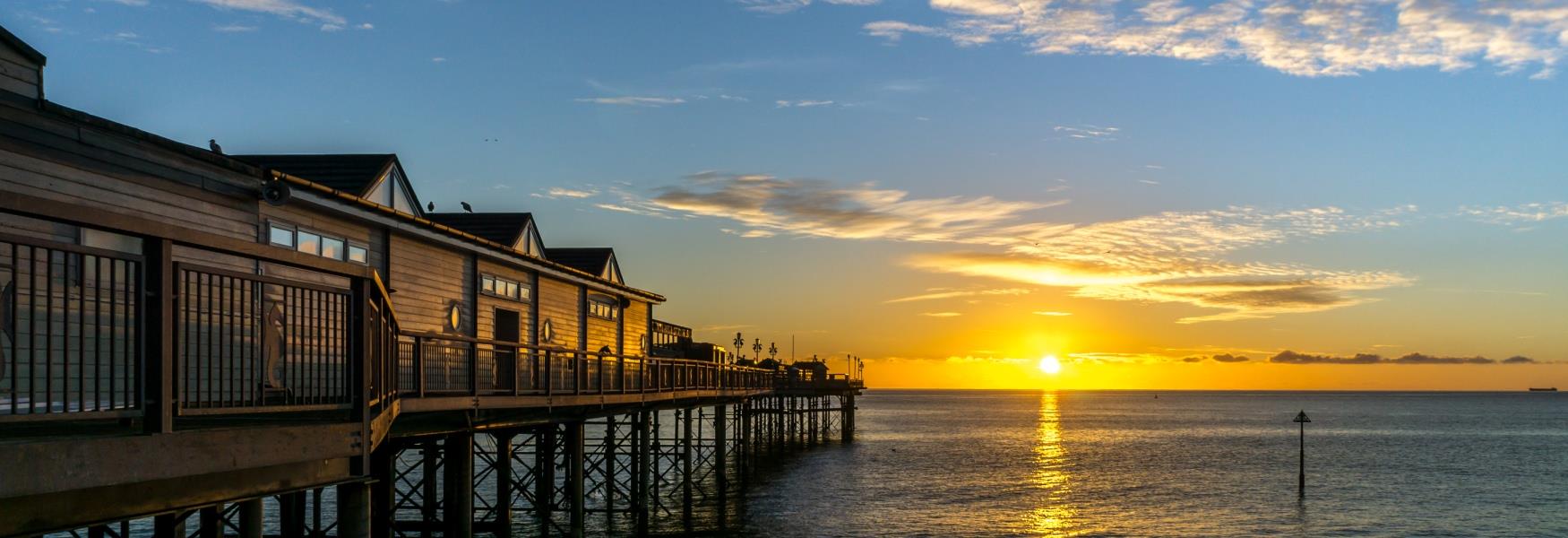
Home to a huge variety of wildlife, wetlands are a vital part of the earth’s ecosystem and yet they are some of the most threatened habitats in the world. Wetlands are typically areas of land that are permanently or seasonally flooded with water, supporting many species that are adapted to live there. Wetlands come in all shapes and sizes and in South Devon we have estuaries, lakes, marshes, ponds, reed beds, rivers and grasslands in abundance.
In honour of Wetlands Day on 2nd February we’ve collated a list of all the top wetlands to visit in South Devon.
Seaton Wetlands
With almost 4km of level trails and boardwalks, Seaton Wetlands offers beautiful marshland and reed beds along the River Axe. The area is made up of three Nature Reserves – Seaton Marshes, Black Hole Marsh & Colyford Common, and makes for a peaceful stroll regardless of the weather. Enjoy a picnic here in the summer with friends and family or take your little ones to go pond dipping to discover the wonderful wildlife that lives here. If you’re after a day out with a difference, why not take the Seaton Tramway to the wetlands, which runs from Seaton to Colyton, stopping at the various wetlands in between. They even offer a fantastic birdwatching tram lead by local experts who know the estuary well enough to help point out the various species of birds that live and migrate here.
Exe Estuary
Starting at Exeter and meeting the English Channel at Dawlish Warren and Exmouth, the Exe Estuary stretches a massive eight miles and is an important site for wading birds. These animals feed on the estuary mudflats at low tide, and roost at high tide at Dawlish Warren and Bowling Green Marsh, near Topsham. There are countless ways to enjoy all the estuary has to offer: for avid walkers and cyclists, the Exe Estuary Trail is wonderful, the 26-mile trail starts at Dawlish Warren, travels up to Exeter and back down to Exmouth on the opposite side, passing through many idyllic towns and villages. The path is mostly flat and has a number of places to stop, catch your breath and admire the scenery. If you’re looking to take in the estuary from the water, we’d definitely recommend a trip with Stuart Line Cruises, you can enjoy all the wonderful scenery as well as learn interesting facts about the estuary with live commentary from their knowledgeable staff. The Riviera and Avocet train lines travel along the estuary, making it even easier for you to jump off and enjoy all the Exe estuary has to offer.
Dawlish Warren Nature Reserve
500 acres of natural beauty, Dawlish Warren Nature Reserve is an area full of grassland, sand dunes, mudflats, freshwater pools and an expansive beach at the mouth of the Exe estuary. The nature reserve is open to the public at all times and is a nature-lover’s heaven. Whilst Dawlish Warren is a popular tourist destination due to its luscious beach, it’s also home to many wildfowl and birds, as well as over 600 different species of plants. Every autumn up to 23,000 birds migrate here from the far north to escape the cold; they arrive in August and tend to stay until late March, making autumn and winter the best times to visit for wildlife watchers. The Warren is vital for their survival, providing the main roosting place on high tides.
Exmouth Local Nature Reserve
Opposite Dawlish Warren, Exmouth Local Nature Reserve is a massive area of tidal sand and mud – interestingly, it’s one of the largest reserves in Devon! It’s considered globally important for winter migrating birds, and it’s argued that the best time to visit is during the winter if you’re interested in birds. However, in the summer the flora has it’s time to shine with a flower-rich bankside. As there are no formal access routes, you’re free to explore the sand, but of course, the mud can get quite deep in some areas so wellies are a must! For those who need a little bit more help to get around, The Weasel Run, part of the East Devon Way, runs alongside the nature reserve with flat surfaces for buggies and wheelchairs, and offers magnificent views across the estuary.
Slapton Ley
Home to the largest natural freshwater lake in the South West and separated from the sea by a narrow, shingle beach, Slapton Ley is a beautiful nature reserve, covering over 490 acres of woodland, marshes, reed beds and of course, the vast freshwater lake. Nature lovers and bird watchers often flock here and with such diverse animals, insects and plant life to discover, it’s clear to see why. The South West Coast Path runs alongside the Ley from Torcross to Strete, making it the perfect place to stop off and bask in the environment during your coastal hike. Slapton Ley has been declared a Site of Special Scientific Interest and is found in the South Devon Area of Outstanding Natural Beauty.
The River Dart & Dart Estuary
Sitting within the South Hams, The River Dart arises 550 metres above sea level on Dartmoor and flows to the sea passing through Dartmeet, Buckfastleigh and Totnes before reaching the estuary mouth between Dartmouth & Kingswear. There are many other picture-perfect villages which sit alongside the Dart, such as Stoke Gabriel and Dittisham which make a great base to start your River Dart exploration. The Dart Estuary supports rich populations of birds, fish, crabs, grey seals, and the occasional dolphin, so many nature-lovers return to the area time and again to try to spot these wonderful animals. The Dart Valley Trail is a great way to explore the estuary on foot, whilst river cruises run between Totnes and Dartmouth if you’d like to explore it from the water. There is also a passenger ferry which operates between Dartmouth and Kingswear to make crossing the river easily accessible.
South Efford Marsh
One of South Devon’s best bird watching sites, South Efford Marsh is a patchwork of saltmarsh and fields which lay next to the River Avon. A tidal gate governs the reserve which allows sea water to flow in at high tide. Curlews, kingfishers and egrets are plentiful, and you may even spot the occasional European otter. The banks adjacent to the river are beautifully covered in gorse and wild flowers which attract many insects, butterflies and even common lizards! This nature reserve sits on the edge of Aveton Gifford, a serene little village where the River Avon flows down towards the beautiful beaches of Bantham and Bigbury-On-Sea.
Hackney Marshes
Buzzards, kestrels and pheasants are in abundance at Hackney Marshes, a large nature reserve at the head of the Teign Estuary near Newton Abbot. Rich marshy meadows, swaying grassland and tranquil ponds makes Hackney Marshes the home to several special plants and animals, making it a fascinating place to visit at any time of the year. The nature reserve is unique in comparison to the other wetlands mentioned as it’s situated in a relatively built-up area, making it a popular dog walking route for those who live and work nearby. The paths here are surfaced making exploring easy for any walking ability and those using pushchairs or wheelchairs, plus plenty of benches and picnic tables where you can pause and enjoy the scenery.
Otter Estuary
Rising in the Blackdown Hills in Somerset and flowing south through East Devon to the sea at Lyme Bay, the River Otter is home to grey mullets, common sandpipers and avocets, it’s also the only place in England where you can see wild beavers. The Otter Estuary is some 57 acres, consisting of tidal mudflats and saltmarsh so it’s a great place for observing wildlife, and with a network of paths, it’s perfect for avid walkers. The mud-rich environment is home to plenty of marine invertebrates which attract wading birds. The Otter Estuary ends at Budleigh Salterton, a picturesque seaside resort with a lovely shingle beach and quaint high street.
Dartmoor National Park
Many visitors are attracted to Dartmoor’s Tors and streams, but the area has many different terrains and environments, including bogs, mires, rhôs pastures and wet woodlands, all of which are internationally important because they’re so rare on a global scale. The blanket bog that forms on Dartmoor is the result of the high granite tors and the high rainfall which leads to the growth of sphagnum moss. This kind of moss is particularly special as it plays a vital role in the creation of peats by storing water in their spongy forms and preventing the decay of dead plant material. Popular bogs and mires on Dartmoor are Taw Marsh, Teign Head and Ducks Pool, but of course, there are plenty other to explore!
We’d love to see your photos of our wonderful wetlands so tag @visitsouthdevon or use #VisitSouthDevon on Facebook, Instagram and Twitter.
Related
Comments
Comments are disabled for this post.



 to add an item to your Itinerary basket.
to add an item to your Itinerary basket.









